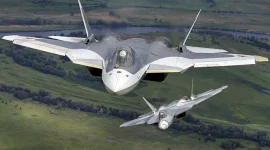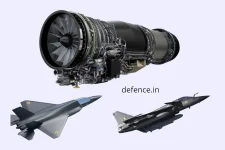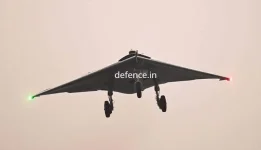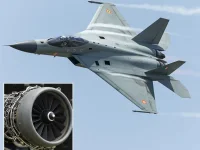- Views: 2K
- Replies: 21
India's aerospace industry is poised for a significant leap forward with ambitious projects like the Regional Transport Aircraft (RTA-90), Multi-role Transport Aircraft (MTA), Tejas Mk2, and the Advanced Medium Combat Aircraft (AMCA) program in development.
However, to successfully navigate the complexities and challenges of these endeavors, the industry needs strong, decisive leadership reminiscent of the late Manohar Parrikar, whose strategic vision revitalized indigenous defence projects, particularly the Light Combat Aircraft (LCA) Tejas.
When Parrikar assumed the role of Defence Minister in 2014, the LCA Tejas Mk1A faced considerable skepticism from the Indian Air Force (IAF). Concerns about delays, perceived shortcomings, and the allure of foreign acquisitions had dampened enthusiasm for the project. Parrikar, however, recognized the strategic importance of an indigenous fighter jet for India's long-term security and technological independence.
He played a crucial role in building consensus among stakeholders, including the Aeronautical Development Agency (ADA), Hindustan Aeronautics Limited (HAL), and the IAF. His approach was pragmatic, focused on finding practical solutions to issues like engine selection, avionics upgrades, and operational capabilities that the IAF deemed critical.
One of Parrikar's key decisions was to push for the procurement of 83 Tejas Mk1A fighters as an interim measure while awaiting the more advanced Tejas Mk2. This not only provided a lifeline to the program but also sent a clear signal of the government's commitment to indigenous defence manufacturing. He successfully navigated the complex interplay between military demands, technological feasibility, and political will, ensuring the project's progress.
Parrikar facilitated the acceptance of numerous Enhancement Change Requests (ECRs) from the IAF, crucial for enhancing the Tejas's capabilities. These changes included integrating advanced weaponry, improved avionics, and addressing other operational requirements, making the aircraft more combat-ready and appealing to the IAF.
The current aerospace projects, like the RTA-90, MTA, Tejas Mk2, and AMCA, require this kind of visionary leadership. A leader like Parrikar would understand the need to balance technological innovation with practical military applications, ensuring these projects meet strategic needs while fostering industry growth.
Parrikar's legacy lies in his ability to cut through bureaucratic red tape, make swift decisions informed by expert advice, and foster closer ties between defence manufacturers and the military. This approach is vital for complex projects like the AMCA, which involve intricate technology transfers and international collaborations.





